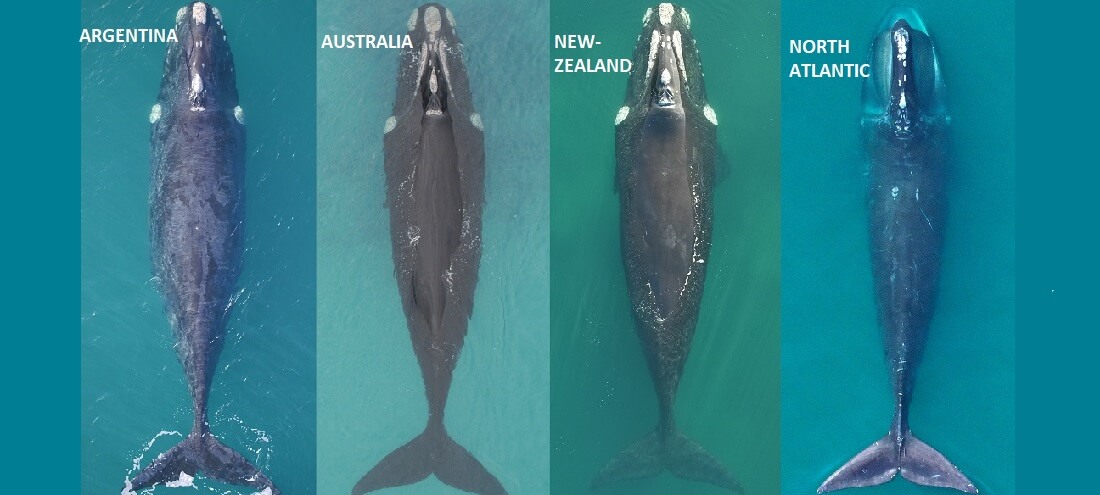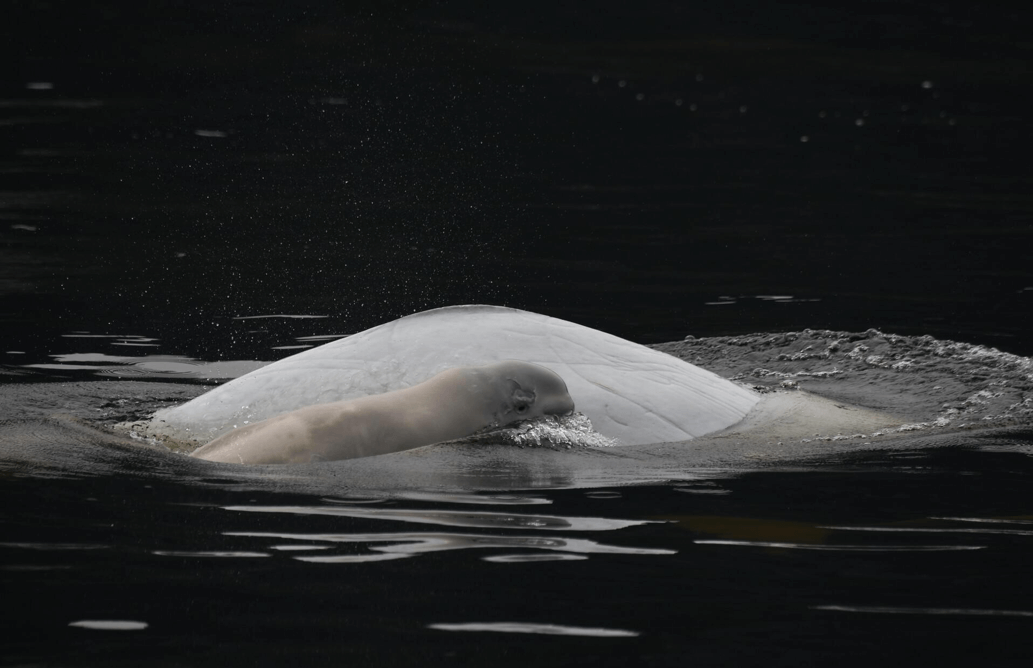It is widely known that the North Atlantic right whale population is struggling, but a study has recently underscored just how precarious this population really is. Researchers compared the fitness of North Atlantic right whales with that of their southern hemisphere cousins. The result is clear: “the body condition of the North Atlantic right whale was significantly poorer compared to the three southern right whale populations,” points out the study’s lead author Fredrik Christiansen of Aarhus University in Denmark.
This conclusion is based on the collaboration of 12 research institutes in 5 different countries. This international team set out to measure the length and girth of right whales using aerial photography and a technique known as photogrammetry. Three of the populations studied – southern right whales from Argentina, Australia and New Zealand – are growing, while that of the North Atlantic right whale (Eubalaena glacialis) is declining.
Alarming lack of fat
With less than 410 representatives of its species and a very low birth rate, Eubalaena glacialis is also the whale that shows the poorest body condition. “NARW juveniles, adults and lactating females all had lower body condition scores compared to the SRW populations,” the study points out.
Worse still, “the magnitude of the difference in body condition between mature females from the North Atlantic and the south was larger than the amount that a southern right whale loses over the first three months of nursing, which is considered to be the energetically most challenging time for females in their reproductive cycle,” emphasizes Fredrik Christiansen in an interview.
However, fat storage is essential for the survival of right whales, migratory species that spend part of their cycle in cold waters and part of their cycle fasting. These fat reserves provide sufficient energy not only to travel from one region to another, but also for reproduction. The poor physical fitness of the North Atlantic right whales is therefore alarming, and is most likely having an impact not only on their survival rate, but also their growth, the age of sexual maturity, the frequency of reproduction as well as calf survival rates. “The poor body condition of individuals within the NARW population is of major concern for its future viability,” worry researchers.
Calves spared?
One of the surprises of this study is the favourable physical fitness of North Atlantic right whale calves. Indeed, the latter do not show a significant difference in body condition with their counterparts in the southern hemisphere. However, North Atlantic right whale calves were smaller in size. The study shows a close correlation between the mother’s body condition and the length of the calf, which suggests that insufficient nursing affects not the calves’ girth, but rather how fast they grow.
Human causes
What explains this difference in body condition between southern right whales and their northern cousins? For researchers, it is linked to the human presence in the North Atlantic right whale’s range. Indeed, although southern populations inhabit waters that see little human traffic, the population of the North lives in the American and Canadian coastal zones, which has earned this species the nickname “urban whale”. Giving birth off Florida and Georgia in winter and feeding notably in the Gulf of St. Lawrence in summer, North Atlantic right whales share their living space with crab and lobster fishermen and swim in and out of shipping lanes.
The new measures taken in 2020 to reduce the risks of entanglement and collisions (“dynamic” closure areas, marking of fishing gear, speed reductions) are therefore more relevant than ever for the protection of the last remaining right whales of the North Atlantic.








